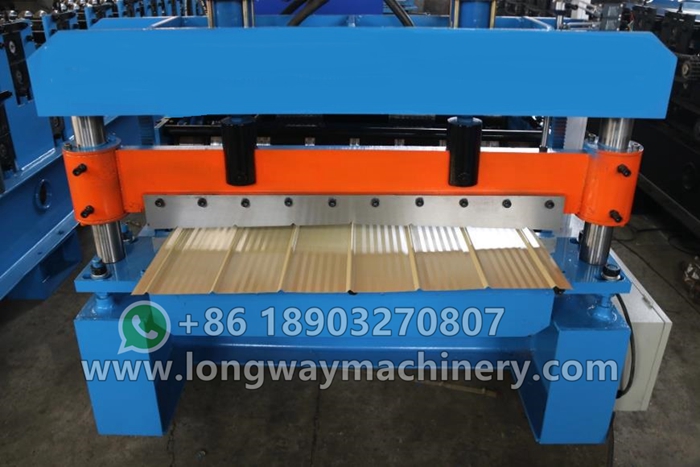Portable Custom Standing Seam Machines for Efficient Metal Roofing Solutions
The Rise of Custom Portable Standing Seam Machines
The construction industry is constantly evolving, adapting to new technologies and methodologies to enhance efficiency, reduce costs, and improve the quality of projects. One notable innovation that has emerged in recent years is the custom portable standing seam machine, which has revolutionized the way metal roofing is installed. This article explores the significance of these machines, their functionality, and the benefits they offer to contractors and builders.
What is a Portable Standing Seam Machine?
A portable standing seam machine is a specialized piece of equipment used to create standing seam metal roofing systems. Standing seams are typically raised interlocking seams that run vertically along the roof, providing superior water resistance and durability compared to traditional roofing systems. The portable nature of these machines allows construction workers to transport them directly to the job site, where they can fabricate the metal panels on demand.
These machines can be customized for different specifications, accommodating various metal types and thicknesses, which caters to the diverse needs of roofing projects. This flexibility is particularly advantageous for contractors who often deal with unique building designs or unorthodox roofing systems.
Benefits of Customization
The customization aspect of portable standing seam machines is one of their most significant advantages. Each project comes with its requirements, such as the type of metal (steel, aluminum, copper), the color, and the panel width. By using a machine that can be tailored to these specifications, contractors can achieve a precise fit and finish, reducing the likelihood of errors and waste.
Moreover, custom machines can be equipped with advanced features such as automatic seam formation, programmable length settings, and even integrated cutting tools for enhanced efficiency. These innovations streamline the roofing process, enabling quicker turnaround times without sacrificing quality.
custom portable standing seam machine

Enhanced Efficiency and Cost-Effectiveness
The introduction of portable standing seam machines has led to significant improvements in both efficiency and cost-effectiveness. Traditional roofing systems often require the hassle of transporting pre-made panels, which can be cumbersome and time-consuming. By allowing fabricators to create tailored panels on-site, portable standing seam machines eliminate numerous logistical challenges.
Additionally, the speed at which panels can be produced helps reduce labor costs. As the machine reduces manual handling and fabrication time, crews can focus on installation, allowing them to complete roofing projects faster and take on more work. This improved efficiency translates to lower costs for both contractors and their clients.
Improved Quality and Durability
The quality of roofing materials is paramount, especially in regions prone to extreme weather conditions. Standing seam roofs are known for their longevity and resilience, largely due to their interlocking design that minimizes the risks of leaks. Custom portable machines ensure that each seam is precisely formed, enhancing the waterproofing capabilities of the metal roof.
Furthermore, because the panels can be made from superior materials tailored for specific climates, contractors can provide warranties and assurances that cater to the longevity expectations of their clients. This not only enhances a contractor’s reputation but also fosters trust and satisfaction among homeowners.
Conclusion
The emergence of custom portable standing seam machines marks a significant advancement in the roofing industry. Their ability to offer tailored solutions on-site enhances efficiency, reduces costs, and ensures high-quality results. As more contractors adopt this technology, it is clear that portable standing seam machines are not just a passing trend, but rather a staple in contemporary roofing practices. This evolution not only supports the demand for better roofing systems but also aligns with the industry's broader goals of sustainability and innovation. For contractors looking to stay competitive, investing in this technology is not just beneficial—it’s essential.
-
Roof Panel Machines: Buying Guide, Types, and PricingNewsJul.04, 2025
-
Purlin Machines: Types, Features, and Pricing GuideNewsJul.04, 2025
-
Metal Embossing Machines: Types, Applications, and Buying GuideNewsJul.04, 2025
-
Gutter Machines: Features, Types, and Cost BreakdownNewsJul.04, 2025
-
Cut to Length Line: Overview, Equipment, and Buying GuideNewsJul.04, 2025
-
Auto Stacker: Features, Applications, and Cost BreakdownNewsJul.04, 2025
-
Top Drywall Profile Machine Models for SaleNewsJun.05, 2025








